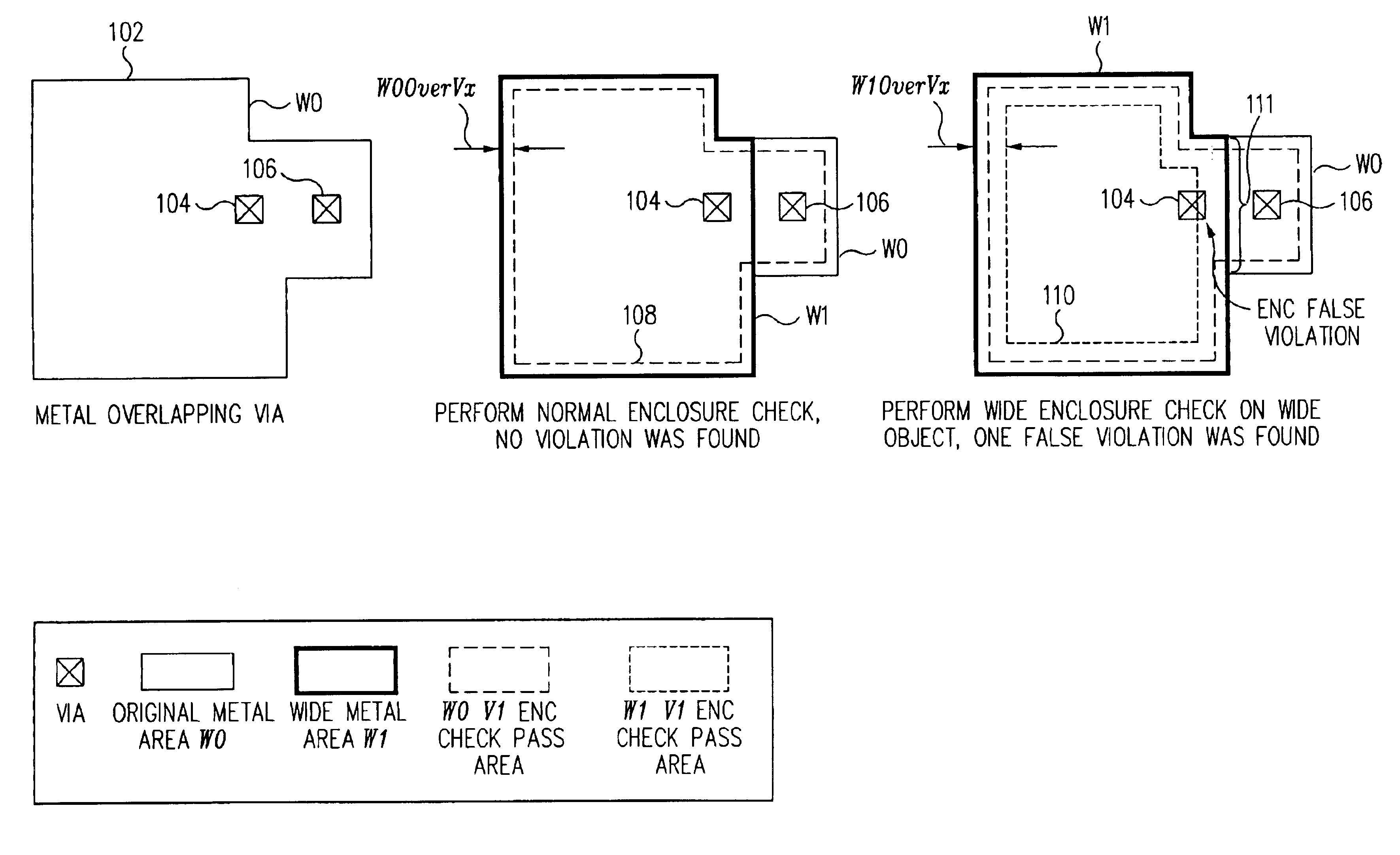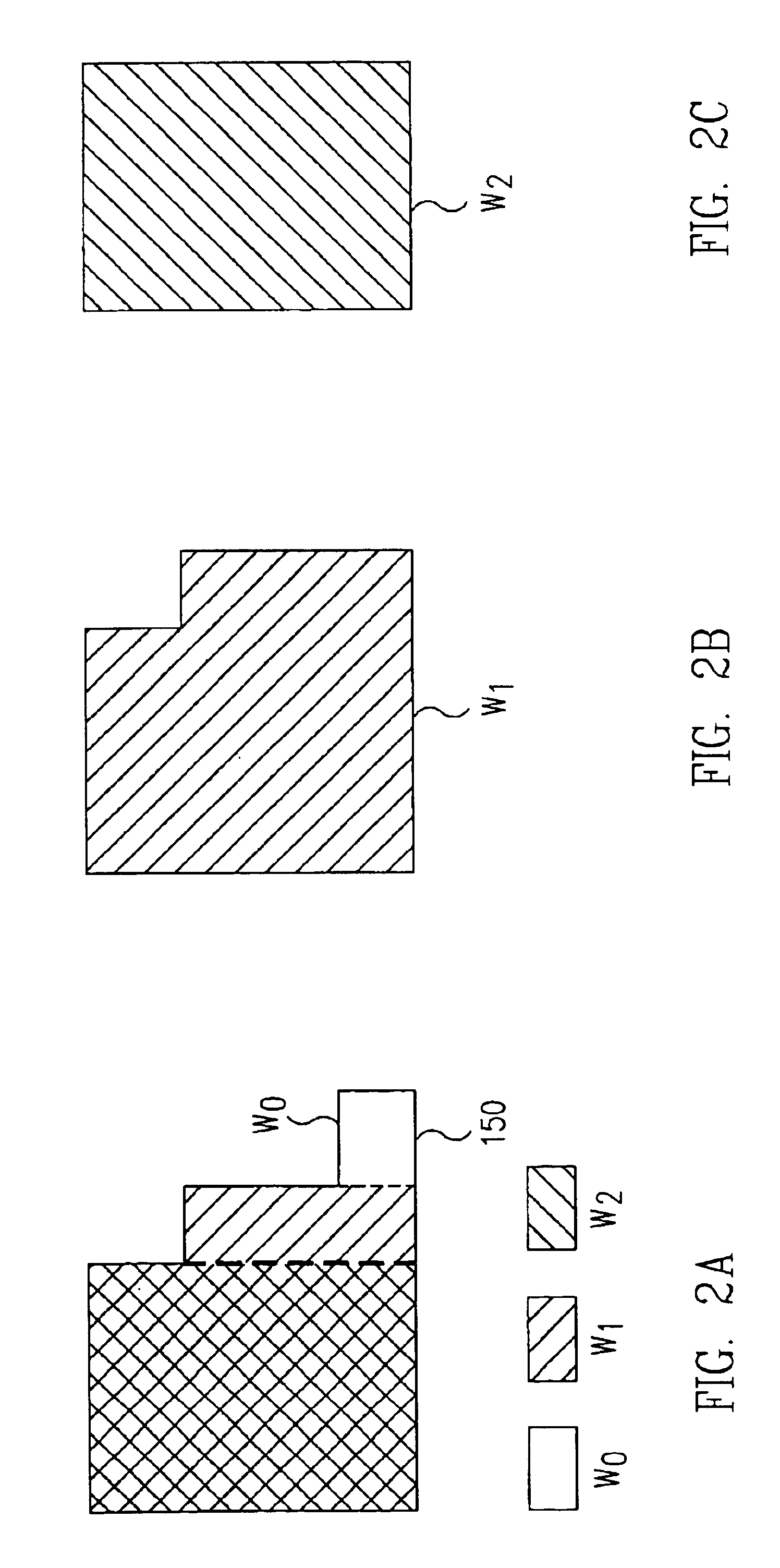Via enclosure rule check in a multi-wide object class design layout
a design layout and object class technology, applied in computer aided design, program control, instruments, etc., can solve the problems of drc, drc is a time-consuming iterative process that often requires manual manipulation and interaction, and the creation of a design layout and performing drc become critical time-consuming processes
- Summary
- Abstract
- Description
- Claims
- Application Information
AI Technical Summary
Benefits of technology
Problems solved by technology
Method used
Image
Examples
Embodiment Construction
[0035]In a modem semiconductor design, it is desirable to apply different sets of rules to geometries (i.e., features) on a given layer depending upon their relative size. For example, many design layers, especially those which are used for implementing gates (e.g., polysilicon layers) and wires (e.g., metal layers) may be divided into different classes depending upon their minimum width in any dimension. Objects in different classes may apply different design rules, such as spacing rules, via enclosure rules, and others, to improve wafer fabrication results.
[0036]These derived intermediate geometries may be referred to as objects to distinguish them from the original physically laid out geometries (or shapes) hereafter. When checking these kinds of objects, it is important to consider the relationship between the artificial objects and the real geometries, because only the real geometries will be fabricated into a chip.
[0037]FIGS. 2A-2C illustrates a geometry 150, representing typi...
PUM
 Login to View More
Login to View More Abstract
Description
Claims
Application Information
 Login to View More
Login to View More - R&D
- Intellectual Property
- Life Sciences
- Materials
- Tech Scout
- Unparalleled Data Quality
- Higher Quality Content
- 60% Fewer Hallucinations
Browse by: Latest US Patents, China's latest patents, Technical Efficacy Thesaurus, Application Domain, Technology Topic, Popular Technical Reports.
© 2025 PatSnap. All rights reserved.Legal|Privacy policy|Modern Slavery Act Transparency Statement|Sitemap|About US| Contact US: help@patsnap.com



